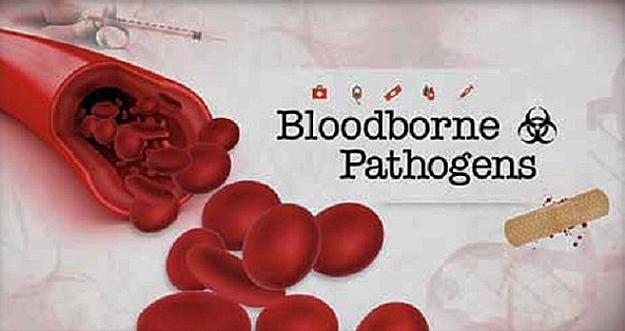You probably think that only those who work in the healthcare-related industry are the ones who should undergo Bloodborne Pathogens training. But like employees working in high-risk environments should also undergo Bloodborne Pathogens Training, school professionals are also required to train so they can safely respond to students in need.
Schools are among the places where students could also face accidents like bruises, minor cuts, or other injuries. In the past, little attention was given to treating injuries to students. But in today’s world, school personnel must come up with a safe response to their students.
Whether in a classroom, playing field, or on the school bus, school professionals and employees must always be alert about the potential danger of bloodborne pathogens. Thus, they are also candidates for Bloodborne Pathogen Training.
In this article, you will better understand why school personnel and professionals undergo Bloodborne Pathogens Training. So, without further ado, let’s get started.
Click here – CPQ Salesforce: Software to Promote Your Business
Bloodborne Pathogen Training Guidelines for Schools
The OSHA and Centers for Disease Control developed guidelines for schools to protect students and themselves from bloodborne pathogens. The guidelines outline procedures for personnel and the school system to follow and substantially reduce risks of contracting the bloodborne disease. At the same time, they are on the school premises.
The OSHA came up with a standard to protect those who can expect contact with blood or any potentially infectious fluids while individuals are at work. They suggest that the school systems identify the person whose duties are usually exposed to blood and potentially infectious body fluids.
Though not all school employee is usually exposed to bloodborne pathogens, every school employee must understand the dangers of infections and the importance of safe practices to reduce the risk.
Click here – 6 Ways Time Tracking Software Can Improve Your Small Business
Who are At Risk School Personnel for Bloodborne Pathogens?
This is the list of school personnel likely at risk for bloodborne pathogens.
-
Social Workers or Guidance Counselors
Guidance counselors usually visit their students at home. If there’s any chance that the student’s house is at high risk, they could be exposed too.
-
First Responders
They are the first ones to arrive if accidents happen to students in school. If the accident involves open wounds or needs CPR, they are likely at risk.
-
Science Teachers
Science teachers usually perform laboratory activities. It’s not only the students at risk but the teachers too! Sometimes, laboratory activities require having the blood or urine of animals or humans.
-
Nurses
School nurses are also there to attend to accidents happening to students.
-
Coaches
Sports coaches are also the ones who will handle the athletes if they get injured.
-
Special Education Teachers
Teachers could be more prone to injury, as their students likely have special medical needs. Also, students are more dependent on adults for personal care.
-
Physical Education Instructors
Of course, P.E. teachers likely deal with accidents with their students, especially if they play in the field or court.
What are the Situations when School personnel is Exposed to Bloodborne Pathogens?
These are examples of situations where school personnel are exposed to bloodborne pathogens.
- Nosebleeding
- Injuries in the playground
- Administrating an immunization
- A student losing a tooth
- Insulin administration
- First-aid administration
- Injuries in the classroom
- Cleaning bloody waste
- Aggressive students
- Sports injuries
What Does the Training Cover?
The School Health Compliance program offers two programs: Bloodborne Pathogens for Schools and Bloodborne Pathogens for the Healthcare.
The training for schools is created for those staff who are non-medical. They were only provided with a training certificate once completed. Other clinical information about bloodborne pathogens doesn’t include because it’s no longer relevant.
On the other hand, the Bloodborne Pathogens training for the Healthcare is perfect for medical professionals like nurses within the school. The training gives a certificate that you may print after completion. This could be submitted to the state’s professional organization to have your CEU credit.
Both BBP training would take about minutes long, and it doesn’t have to be completed in just one session.
These are the topics covered for BBP in Schools
- Background of the Bloodborne Pathogens
- Symptoms and epidemiology of the Bloodborne Pathogens
- Transmission of Bloodborne Pathogens
- Vaccinations and treatments for the Bloodborne pathogens
- Exposure controls
- Protection of self from bloodborne pathogens
Also, these are the Bloodborne pathogens for Healthcare
- Introduction
- Sources and history
- Explanation of BBP
- Engineering Controls
- Work Practices controls
- Sanitizing and Cleaning
- Exposure Incident
- Waste Removal
Having completed this training, the school district personnel for BBP may use it already. Those who have undergone this training should be available for staff members to ask questions when they are taking the training. The school district should also notify the employees where they will find copies of the BBP plan and procedures.
Conclusion
Bloodborne Pathogen Training is important in protecting the health and safety of healthcare workers and other professionals at risk of exposure to bloodborne diseases. The BBP training would teach them to guard themselves and the students against infectious and other dangers. With that, the training should never be taken for granted for the betterment of everybody and the reputation of schools.






